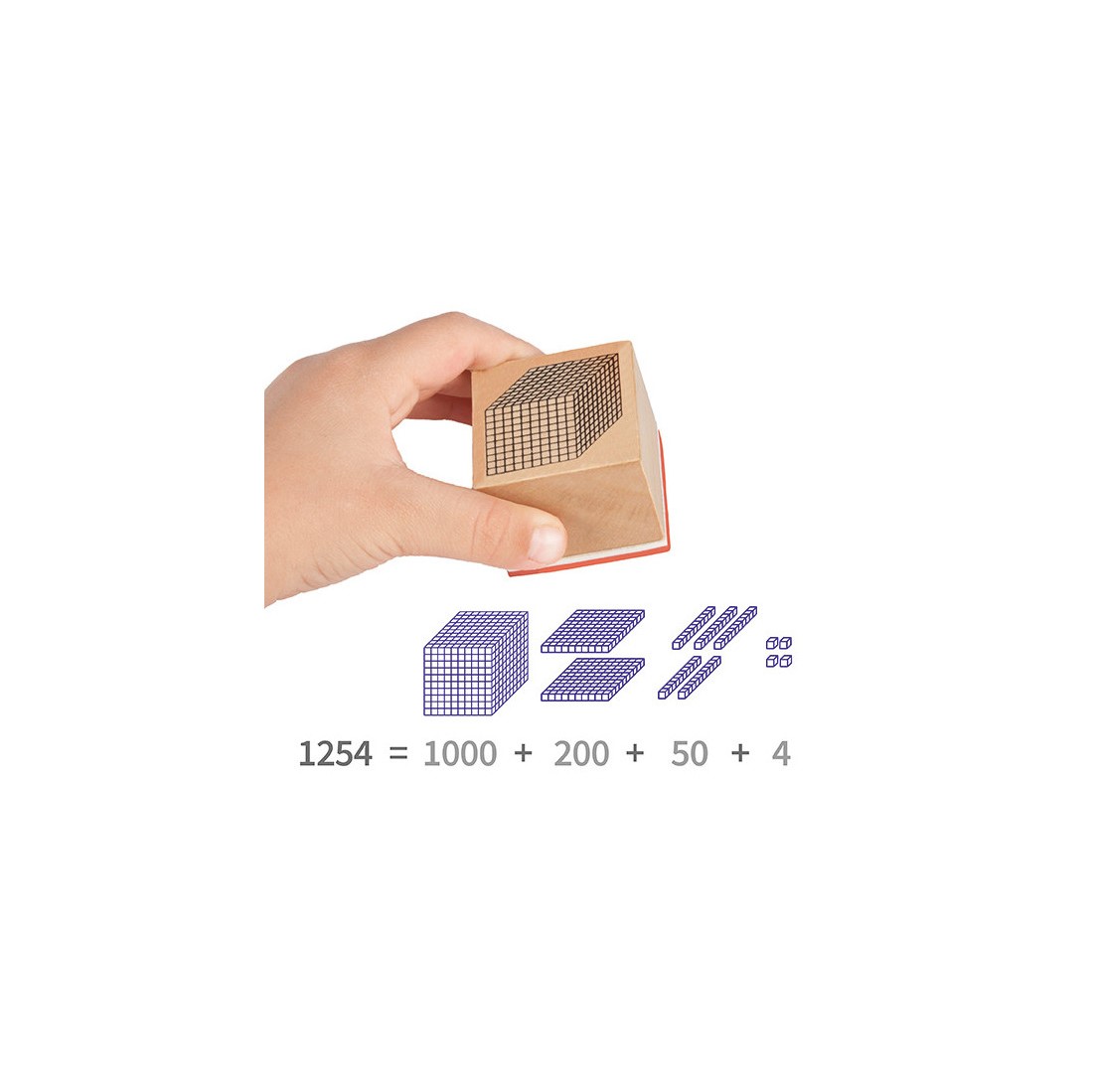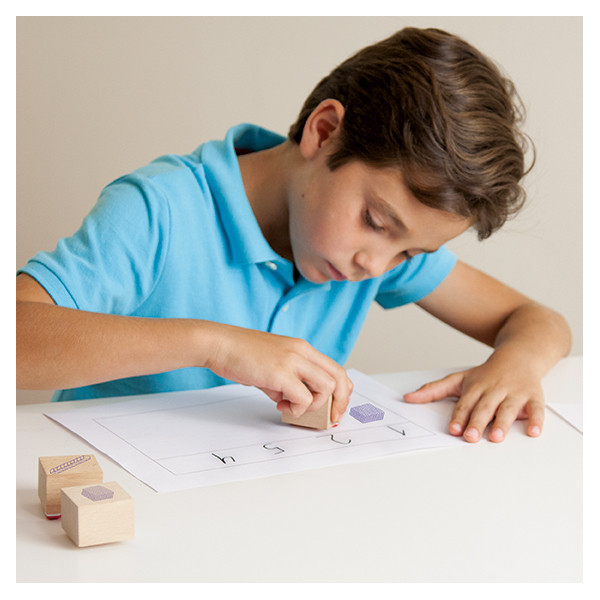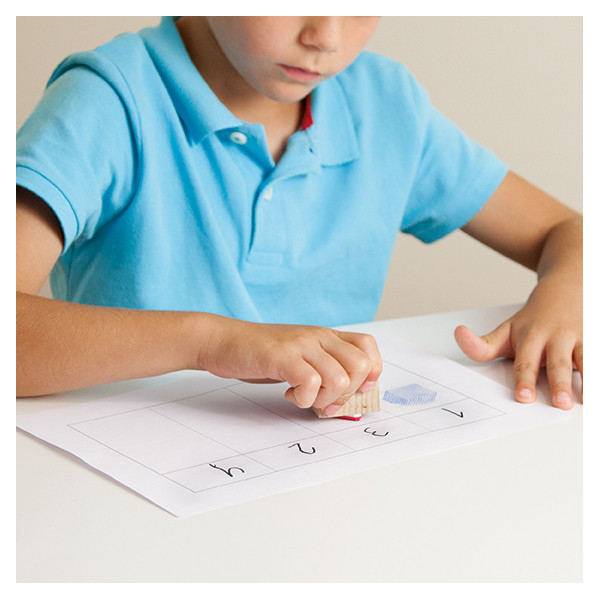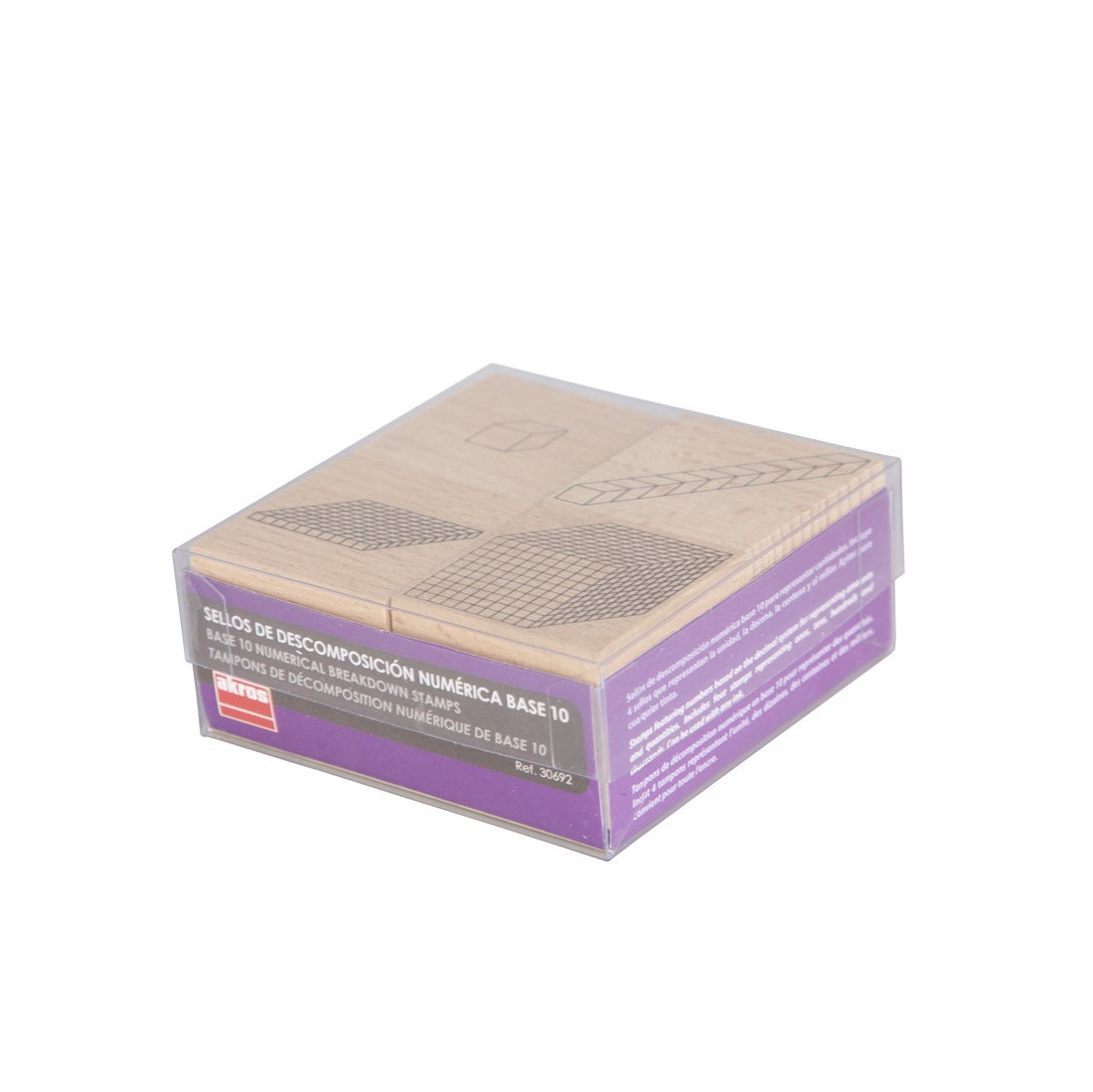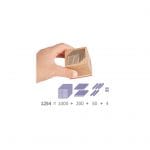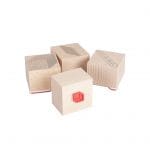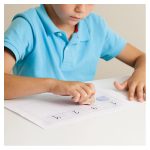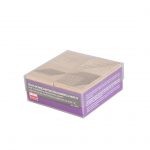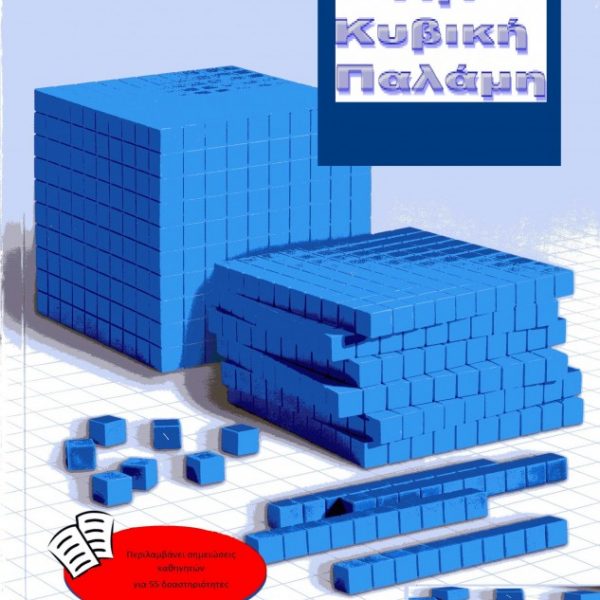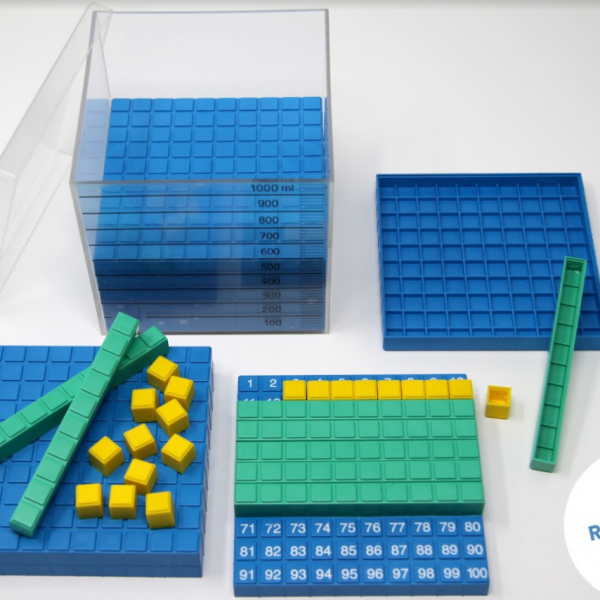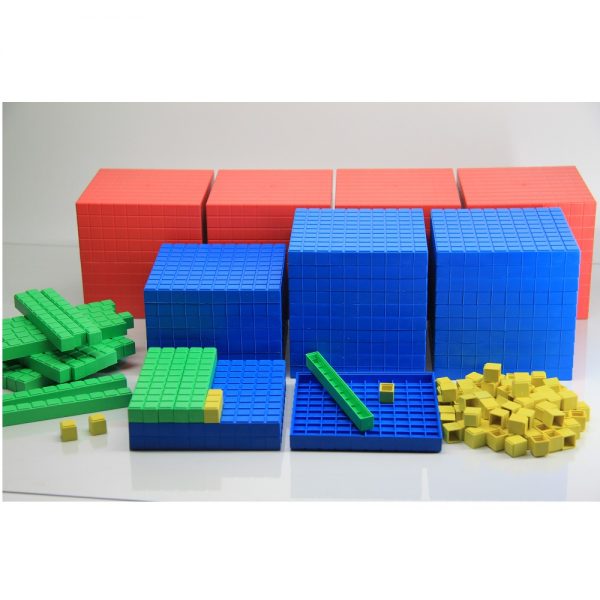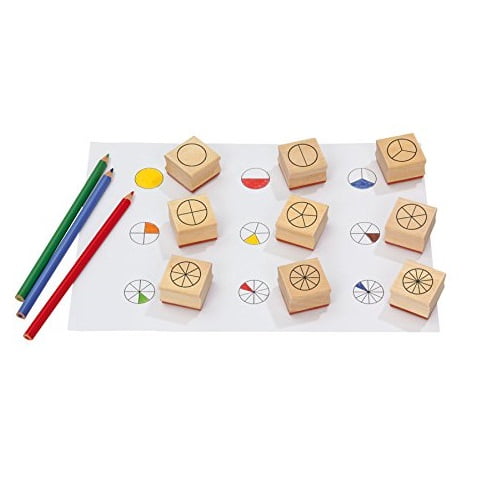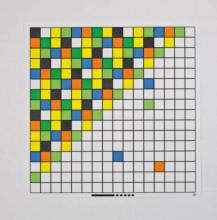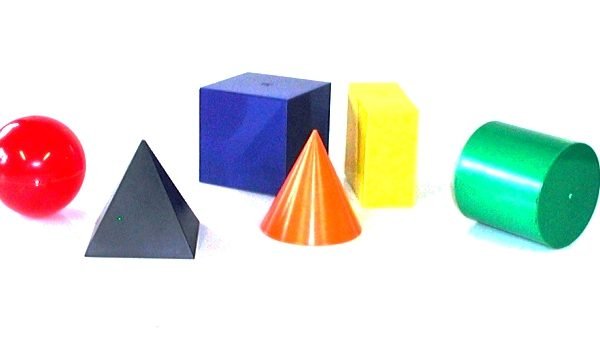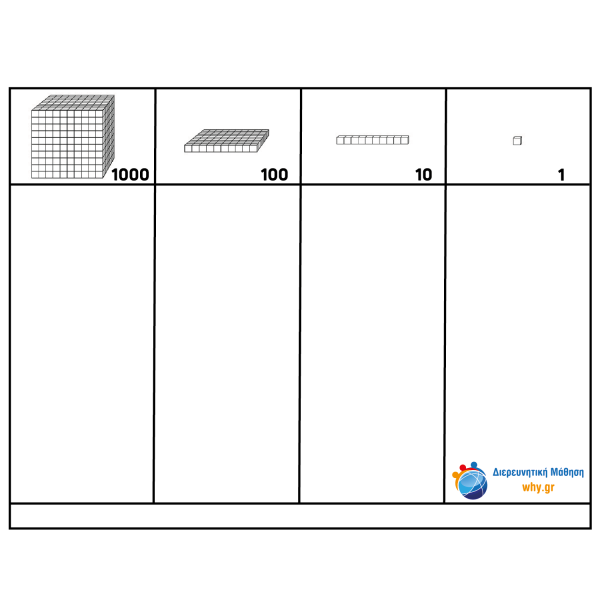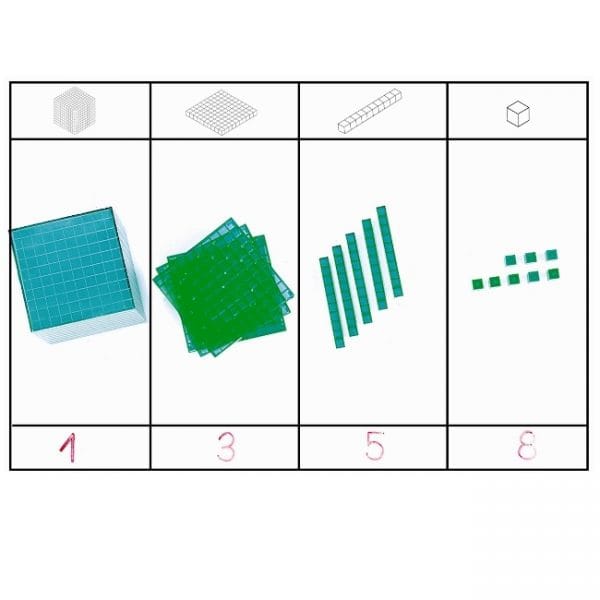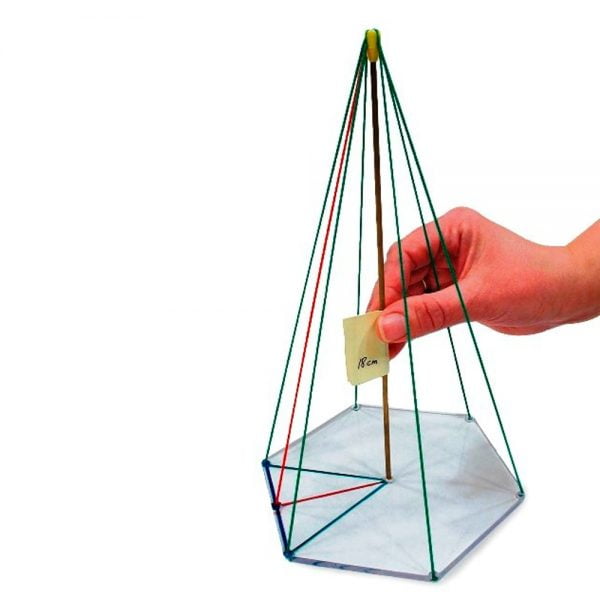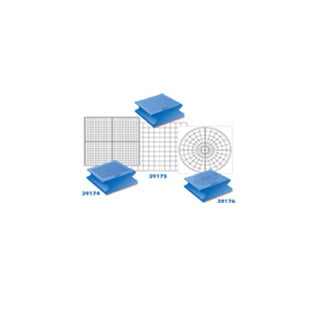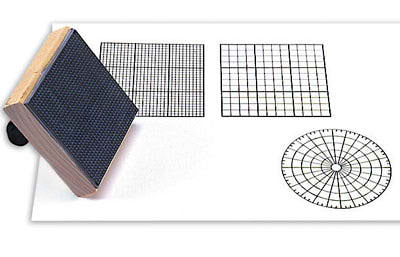Base 10 numerical breakdown stamps
Base 10 numerical breakdown stamps for representing quantities. Includes 4 solid wood stamps that represent one, ten, a hundred, and a thousand. Suitable for any ink.
From 3 to 8 years.
Montessori Method
With these stamps, we can help children to learn number decomposition in base 10 in a visual and manipulative way. This material can help us work on quantities and their representation in a fun and exciting way in the classroom or at home. With the smallest children, we approach number decomposition with tens and ones. Although the game is aimed at children from 3 to 8 years, it can be played with older children with more complex activities. Also with children who have special needs or with adults that need to work on number decomposition, adding and subtracting or visual representation of numbers.
Inspired by the Montessori Methodology.
EDUCATIONAL OBJECTIVES:
- To establish the association that exists between a number of objects, its pictorial representation, its canonical decomposition, and its representation with positional numbers.
- Facilitate number decomposition and the positional value both of natural numbers and decimal numbers.
- To improve comprehension of addition and subtraction operations and their different algorithms.
METHOD OF PLAY AND ACTIVITIES:
- Representing numbers from 1 to 10:
Depending on the knowledge of each child, write the numbers from 1 to 10 and ask the child to represent them with the stamps. In this way, next to the number one, the child would put a stamp of the one. Next to number two, two stamps of the one, and so on progressively up to the number 10 or up to the number that the child has learned. It is recommended to use one stamp.
- The friends of…
Put the number you want to work with at the top of the sheet. Then put the different sums that give the above number in a two-column table. For example, if the top number is six, ask the children to tell you what the friends of the six are. I.e. so that they can see what combinations of numbers make up the six, for example, 1+5, 2+4, 3+3, 4+2…This is represented with stamps.
ACTIVITIES



 Botzees
Botzees Keyestudio
Keyestudio Fischertechnik
Fischertechnik